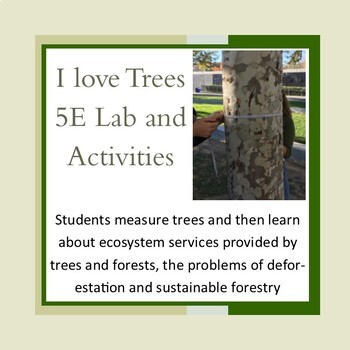Trees, Forestry and Deforestation 5E Lab-Distance learning possible
- Word Document File
What educators are saying
Also included in
- Use these resources with Unit 5 AP Environmental Science.Note: I moved "Climate Change and Cities Experimental Design Lab" To Unit 5 bundle instead of Unit 9 as I believe this lab also works well with Topic 5.10: Impacts of Urbanization. If you previously purchased the Unit 9 bundle, please take notPrice $11.00Original Price $12.50Save $1.50
- This bundle includes these resources for AP Environmental Science including:Study guides with EXACTLY what students need to know for each unit (more detail than the CED). Full practice exam.Lots of labs and activitiesGraphic organizersMath practiceDiagram and chart notes for specific, difficult topPrice $200.00Original Price $227.25Save $27.25
Description
Update for distance learning: Students could do this lab at home with a tree in their backyard, neighborhood, or park. They need a cheap measuring tape, a cardboard triangle, string and a weight. Through zoom or a video, teachers can help students through the math. Another option is for the teacher to make a video measuring a tree and the corresponding math. Students can do the follow-up questions on their own.
This is a full 5E designed for inquiry. It is advanced enough for AP, but accessible for on-level Biology or Environmental Science students.
Students will love going outside to measure trees at your school or nearby park using inexpensive materials. After measuring, students will use formulas (given) to calculate the carbon sequestration of that tree. Students will then use a computer website to calculate more ecosystem services. The Elaborate section introduces students to deforestation and sustainable forestry using several mini-videos found on the web. The Evaluate asks students to enter information about trees, deforestation and forestry on a graphic organizer.







